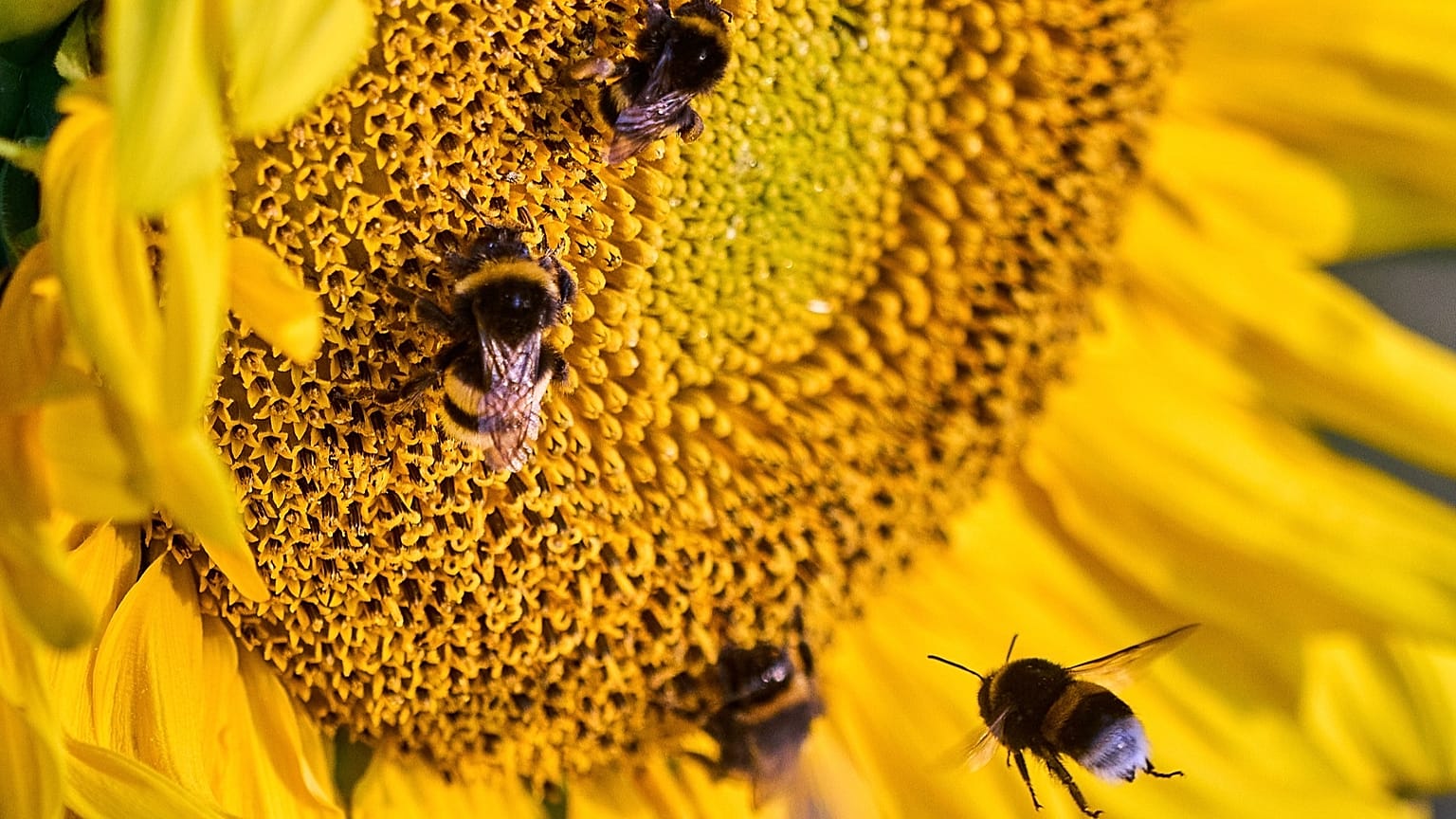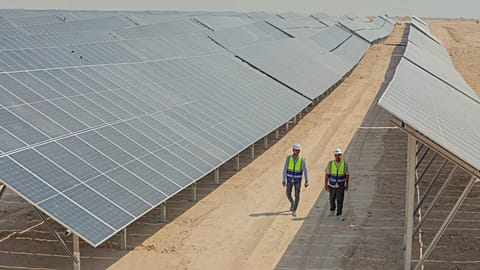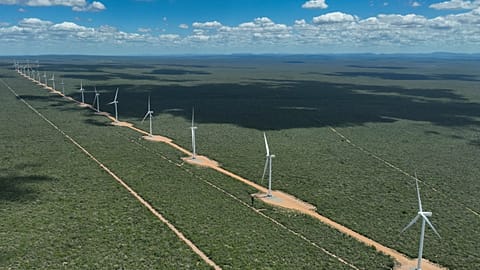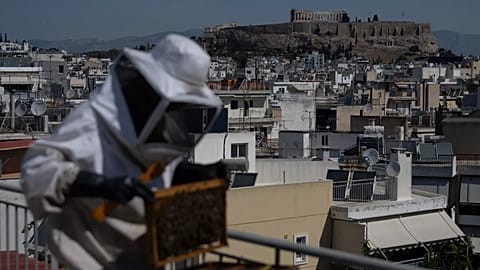Solar farms could provide a habitat for bumblebees, study shows.
 ADVERTISEMENT
ADVERTISEMENT
Bumblebees are crucial for ecosystems. They pollinate wild plants and crops, keeping habitats healthy.
But many populations in Europe are declining because of climate change and habitat loss.
A new study, published in Global Change Biology, looks at how solar farms could help with bumblebee conservation in the UK.
Why are bumblebees on the decline?
Globally, bumblebee populations are diminishing.
A 2023 study in Nature projected that around 38 to 76 per cent of European bumblebee species currently classified as ‘Least Concern’ are projected to undergo losses of at least 30 per cent of ecologically suitable territory by 2061–2080. 2024 was also the worst year for bumblebees in the UK, according to the Bumblebee Conservation Trust.
There are a number of factors at play: land use change, intensive agriculture, invasive species, and infectious diseases affect pollinators like bumblebees.
Climate change also plays a role: intensifying extreme weather that can threaten bees’ habitats and disturb life cycles.
The hidden habitat of solar
In this study, which reports to be the first to investigate the role of solar farms in future biodiversity conservation, researchers wanted to see how bumblebees would fare with solar farms. These farms can offer an opportunity for habitat creation for wildlife, and contribute to both low-carbon energy and nature recovery.
The researchers looked at 1042 operational solar farms in Great Britain, creating a high-resolution model to simulate bumblebee foraging and population dynamics. This enabled them to predict bumblebee density in and around the UK's solar farms, while also accounting for the effects of different future scenarios, like changed habitat context and configuration.
“The model predicts how bees use these landscapes based on foraging and nesting resources,” says Dr Hollie Blaydes, Senior Research Associate at Lancaster University and first author of the study. “This aspect of the work was particularly novel - it is unusual for modelling like this to be done in such detail.”
The modelling suggests that the number of bumblebees within solar farms could more than double if solar farms are managed for biodiversity. Wildflowers on the farms provided a rich source of food, especially compared with turf.
A “refuge” for bumblebees
The “bee-boosting” effects of solar farm management were largely constrained to that of the farms themselves. In foraging surrounding solar farms, landscape changes had a greater impact on bumblebee densities, which the authors say suggests “a single solar farm in isolation generally did not counteract the influence of wider land-use changes expected under future scenarios.”
But as many countries build solar farms to meet renewable energy commitments, the authors urge that they should consider “strategic siting” to connect bumble habitats.
“Solar farms can be refuges for bumblebees in the present day and in the future and could play a part in mitigating habitat loss – if managed well,” says Blaydes. “But, solar farms alone will not be able to counteract the effects of all future land use changes on bumblebees and other biodiversity.”

















